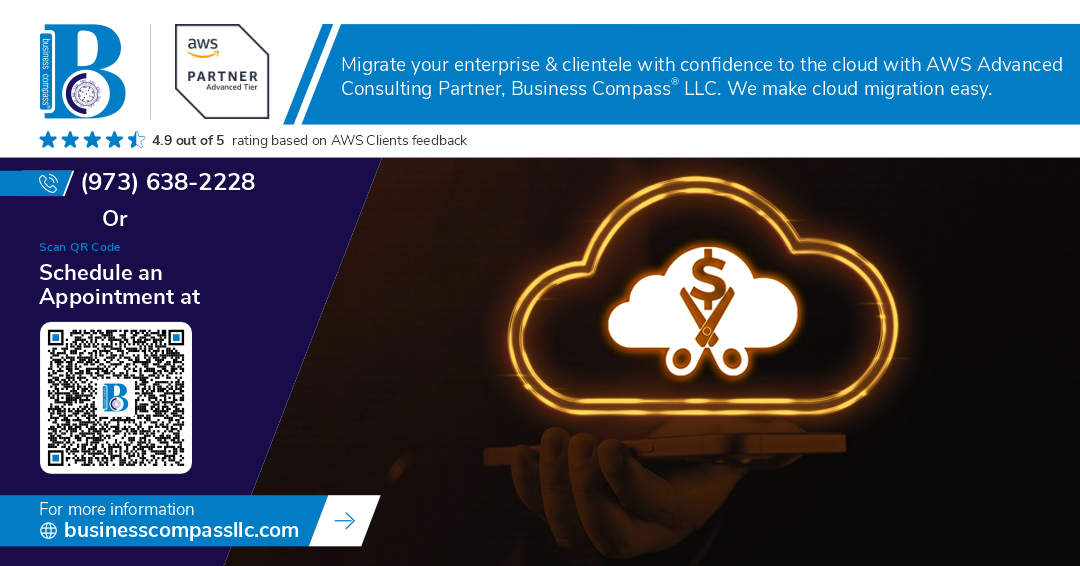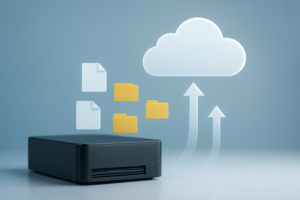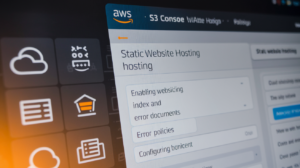Are you feeling the pinch of escalating database costs? 💸 You’re not alone. As businesses increasingly rely on data-driven decisions, the expenses associated with managing and maintaining databases can quickly spiral out of control. Whether you’re using Amazon RDS, DynamoDB, Aurora, Redshift, or ElastiCache, the challenge remains the same: how to optimize costs without compromising performance?
The good news is that there are proven strategies to help you slash your database expenses while maintaining—or even improving—efficiency. From understanding the key cost drivers to implementing specific optimization techniques for each database type, this blog post will be your comprehensive guide to database cost optimization. We’ll explore everything from RDS instance right-sizing to DynamoDB capacity planning, and from Aurora serverless configurations to Redshift query optimization.
Ready to take control of your database costs? Let’s dive into the world of cost optimization strategies for AWS databases, starting with a crucial first step: understanding the factors that drive your database expenses.
Understanding Database Cost Drivers
A. Instance types and pricing models
When it comes to database cost optimization, understanding instance types and pricing models is crucial. AWS offers various instance types optimized for different workloads, each with its own pricing structure. Here’s a breakdown of common instance types and their use cases:
| Instance Type | Use Case | Pricing Model |
|---|---|---|
| General Purpose | Balanced workloads | On-demand, Reserved, Spot |
| Memory Optimized | High-memory applications | On-demand, Reserved |
| Compute Optimized | CPU-intensive workloads | On-demand, Reserved, Spot |
| Storage Optimized | High I/O operations | On-demand, Reserved |
To optimize costs:
- Choose the right instance type based on your workload
- Utilize Reserved Instances for predictable, long-term usage
- Leverage Spot Instances for flexible, fault-tolerant applications
B. Storage costs and optimization
Storage costs can significantly impact your database expenses. Consider these optimization strategies:
-
Use appropriate storage types:
- General Purpose (SSD) for most workloads
- Provisioned IOPS (SSD) for I/O-intensive applications
- Magnetic storage for infrequently accessed data
-
Implement data compression techniques
-
Regularly purge unnecessary data
-
Utilize storage tiering for cost-effective data management
C. Data transfer fees
Data transfer costs can quickly accumulate, especially in distributed systems. To minimize these expenses:
- Keep data transfer within the same Availability Zone when possible
- Use AWS Direct Connect for frequent, large data transfers
- Implement caching mechanisms to reduce repeated data transfers
- Optimize query patterns to minimize data movement
D. Backup and retention policies
Effective backup and retention policies balance data protection with cost efficiency. Consider:
- Implementing automated backups with appropriate retention periods
- Using incremental backups to reduce storage costs
- Leveraging cold storage options for long-term retention
- Regularly reviewing and adjusting retention policies based on compliance requirements and business needs
By carefully managing these cost drivers, you can significantly optimize your database expenses while maintaining performance and reliability.
RDS Cost Optimization Strategies
A. Right-sizing instances
Right-sizing your RDS instances is crucial for optimizing costs without compromising performance. Start by analyzing your current usage patterns and workload requirements. Use AWS CloudWatch metrics to monitor CPU utilization, memory consumption, and I/O operations. Aim for instances that maintain an average CPU utilization between 50-70% for optimal performance and cost-efficiency.
Consider the following strategies for right-sizing:
- Vertical scaling: Adjust instance size up or down based on workload demands
- Horizontal scaling: Use read replicas to distribute read-heavy workloads
- Instance family selection: Choose the appropriate instance family (e.g., memory-optimized, compute-optimized) based on your application’s needs
| Instance Size | vCPUs | Memory (GiB) | Network Performance |
|---|---|---|---|
| db.t3.micro | 2 | 1 | Low to Moderate |
| db.m5.large | 2 | 8 | Up to 10 Gbps |
| db.r5.xlarge | 4 | 32 | Up to 10 Gbps |
B. Leveraging reserved instances
Reserved Instances (RIs) offer significant cost savings compared to On-Demand pricing. Consider the following RI options:
- Standard RIs: Provide the highest discount but require a 1 or 3-year commitment
- Convertible RIs: Offer flexibility to change instance families, OS, or tenancy
- Savings Plans: Provide savings in exchange for a commitment to a consistent amount of usage
To maximize RI benefits:
- Analyze historical usage patterns to determine optimal RI purchases
- Use a mix of RIs and On-Demand instances for dynamic workloads
- Regularly review and modify RI coverage to align with changing needs
C. Implementing multi-AZ deployments efficiently
Multi-AZ deployments enhance availability but can increase costs. Optimize multi-AZ implementations by:
- Using multi-AZ only for critical production databases
- Leveraging read replicas in different AZs for improved read performance and disaster recovery
- Implementing automatic failover to minimize downtime and manual intervention
D. Optimizing storage with gp3 volumes
Gp3 volumes offer better performance and cost-efficiency compared to gp2. To optimize storage costs:
- Migrate existing gp2 volumes to gp3 for improved IOPS and throughput
- Right-size storage capacity based on actual usage and growth projections
- Utilize automated storage scaling to handle unexpected storage demands
By implementing these RDS cost optimization strategies, you can significantly reduce your database expenses while maintaining optimal performance and reliability.
DynamoDB Cost Reduction Techniques
Choosing between on-demand and provisioned capacity
When optimizing DynamoDB costs, selecting the right capacity mode is crucial. Let’s compare on-demand and provisioned capacity:
| Feature | On-Demand Capacity | Provisioned Capacity |
|---|---|---|
| Pricing | Pay-per-request | Pay for provisioned capacity |
| Scalability | Automatic | Manual or auto-scaling |
| Predictability | Less predictable costs | More predictable costs |
| Use Case | Unpredictable workloads | Consistent or gradually changing traffic |
For applications with variable or unpredictable workloads, on-demand capacity offers flexibility and potential cost savings. However, for steady or gradually changing traffic patterns, provisioned capacity can be more cost-effective.
Implementing auto-scaling effectively
To optimize costs with provisioned capacity, implement auto-scaling:
- Set appropriate minimum and maximum capacity units
- Choose suitable target utilization percentages
- Configure scale-in and scale-out cooldown periods
- Monitor and adjust auto-scaling settings regularly
Utilizing DynamoDB Accelerator (DAX)
DAX can significantly reduce read latency and costs:
- Implement DAX for frequently accessed data
- Use write-through caching to maintain consistency
- Configure appropriate TTL settings to balance freshness and cost
Optimizing data models for cost-efficiency
Efficient data modeling is key to reducing DynamoDB costs:
- Minimize data duplication
- Use sparse indexes to reduce storage costs
- Implement efficient partition and sort key strategies
- Leverage TTL for automatic data expiration
By implementing these techniques, you can significantly reduce your DynamoDB costs while maintaining performance. Next, we’ll explore cost management strategies for Amazon Aurora.
Aurora Cost Management
Serverless vs. provisioned instances
When considering Aurora cost management, choosing between serverless and provisioned instances is crucial. Serverless Aurora automatically scales compute capacity based on workload, ideal for variable or unpredictable workloads. Provisioned instances offer more control but require careful capacity planning.
| Feature | Serverless | Provisioned |
|---|---|---|
| Scaling | Automatic | Manual |
| Cost | Pay-per-use | Fixed hourly |
| Control | Limited | Full |
| Ideal for | Variable workloads | Stable, predictable workloads |
Leveraging Aurora’s storage efficiency
Aurora’s storage architecture significantly impacts cost efficiency:
- Automatically grows in 10GB increments
- Only charges for space actually used
- Employs continuous garbage collection
To optimize storage costs:
- Regularly monitor storage usage
- Implement data archiving strategies
- Utilize Aurora’s clone feature for testing environments
Optimizing read replicas
Read replicas can enhance performance and availability while managing costs:
- Scale read capacity without impacting the primary instance
- Distribute read workloads geographically
- Use auto-scaling for read replicas based on CPU utilization
Utilizing Aurora Global Database for multi-region setups
Aurora Global Database offers cost-effective multi-region deployment:
- Replicates data across regions with minimal latency
- Enables disaster recovery without full region replication
- Allows for regional read scaling without additional write capacity
By leveraging these Aurora-specific features, organizations can significantly optimize their database costs while maintaining high performance and availability.
Redshift Cost Optimization
Implementing proper node sizing and cluster scaling
Proper node sizing and cluster scaling are crucial for optimizing Redshift costs. Start by analyzing your workload patterns to determine the appropriate node type and quantity. Consider using:
- Dense compute nodes (DC2) for compute-intensive workloads
- Dense storage nodes (DS2) for storage-heavy scenarios
- RA3 nodes for separating compute and storage
Implement auto-scaling to adjust cluster size based on demand:
| Scaling Method | Description | Best For |
|---|---|---|
| Scheduled scaling | Predictable workloads | Regular batch jobs |
| Predictive scaling | ML-based forecasting | Variable workloads |
| Dynamic scaling | Real-time adjustments | Unpredictable loads |
Utilizing Redshift Spectrum for cold data
Redshift Spectrum allows querying data directly from S3, reducing storage costs for infrequently accessed data. Benefits include:
- Cost-effective storage for historical data
- Improved query performance on hot data
- Seamless integration with existing Redshift clusters
Optimizing query performance for cost reduction
Efficient queries lead to lower costs. Implement these optimization techniques:
- Use EXPLAIN to analyze query plans
- Create appropriate sort and distribution keys
- Optimize table design for frequently joined columns
- Leverage materialized views for complex queries
Leveraging RA3 nodes with managed storage
RA3 nodes offer significant cost advantages by decoupling compute and storage:
- Pay only for the compute resources you need
- Automatically scale storage as your data grows
- Benefit from improved query performance with local caching
By implementing these strategies, you can significantly reduce your Redshift costs while maintaining optimal performance. Next, we’ll explore cost reduction techniques for ElastiCache, another critical component in the AWS database ecosystem.
ElastiCache Cost Reduction Strategies
Choosing between Redis and Memcached
When it comes to ElastiCache cost reduction, selecting the right engine is crucial. Redis and Memcached each have their strengths and use cases. Redis offers more features and data structures, while Memcached is simpler and often more cost-effective for basic caching needs.
| Feature | Redis | Memcached |
|---|---|---|
| Data Structures | Complex (Lists, Sets, Sorted Sets) | Simple (Key-Value) |
| Persistence | Yes | No |
| Replication | Yes | No |
| Cost | Higher | Lower |
Choose Memcached for:
- Simple caching scenarios
- Large-scale cache deployments
- Cost-sensitive applications
Choose Redis for:
- Complex data structures
- Persistence requirements
- Advanced features like pub/sub
Implementing proper node sizing and scaling
Optimizing node size and scaling strategies is essential for cost-effective ElastiCache usage:
- Right-size nodes: Start with smaller instances and scale up as needed
- Use auto-scaling: Implement automatic scaling based on metrics like CPU utilization
- Leverage read replicas: Distribute read workloads across multiple nodes
- Monitor cache hit rates: Adjust cache size to maintain optimal hit rates
Utilizing multi-AZ deployments efficiently
Multi-AZ deployments enhance availability but can increase costs. To optimize:
- Use multi-AZ only for critical workloads
- Implement proper failover testing to ensure reliability
- Consider using Global Datastore for Redis for multi-region deployments
Optimizing data eviction policies
Proper eviction policies can significantly impact costs by ensuring efficient memory usage:
- LRU (Least Recently Used): Ideal for most scenarios
- LFU (Least Frequently Used): Better for certain access patterns
- TTL (Time to Live): Set expiration times for ephemeral data
By fine-tuning these strategies, you can significantly reduce ElastiCache costs while maintaining performance. Next, we’ll explore cross-database cost optimization techniques that can be applied across various AWS database services.
Cross-Database Cost Optimization Techniques
A. Implementing effective data lifecycle management
Effective data lifecycle management is crucial for cross-database cost optimization. By implementing a comprehensive strategy, you can significantly reduce storage costs and improve overall database performance.
Key components of data lifecycle management:
- Data classification
- Retention policies
- Archiving
- Deletion
| Stage | Action | Benefit |
|---|---|---|
| Active | Store in high-performance storage | Fast access, optimal performance |
| Warm | Move to lower-cost storage | Reduced storage costs |
| Cold | Archive to long-term storage | Minimal storage costs |
| Obsolete | Delete or purge | Eliminate unnecessary costs |
Implement automated processes to move data through these stages based on predefined rules and access patterns. This approach ensures that you’re only paying for the storage and performance you need at each stage of the data lifecycle.
B. Leveraging AWS cost management tools
AWS provides powerful tools to help you optimize costs across your database ecosystem:
- AWS Cost Explorer: Analyze and visualize your database spending
- AWS Budgets: Set custom budgets and receive alerts when thresholds are exceeded
- AWS Trusted Advisor: Get recommendations for cost optimization and resource utilization
Regularly review these tools to identify cost-saving opportunities and track your optimization efforts.
C. Optimizing network traffic between databases
Reducing network traffic between databases can lead to significant cost savings:
- Colocation: Place related databases in the same region or availability zone
- Data replication: Implement intelligent replication strategies to minimize data transfer
- Caching: Use in-memory caching to reduce repeated database queries
- Query optimization: Refine queries to minimize data transfer between databases
D. Implementing proper monitoring and alerting for cost anomalies
Set up comprehensive monitoring and alerting systems to catch cost anomalies early:
- Configure CloudWatch alarms for unusual spikes in database usage or costs
- Use AWS Config rules to detect non-compliant resource configurations
- Implement custom metrics to track database-specific cost indicators
By proactively monitoring and addressing cost anomalies, you can prevent unexpected expenses and maintain optimal database cost efficiency across your AWS infrastructure.
Optimizing database costs is crucial for maintaining efficient and cost-effective cloud infrastructure. By implementing strategies tailored to each database service – RDS, DynamoDB, Aurora, Redshift, and ElastiCache – organizations can significantly reduce their expenses while maintaining performance. From right-sizing instances and leveraging reserved capacity to optimizing query performance and implementing effective data lifecycle management, there are numerous ways to streamline database costs.
Remember, cost optimization is an ongoing process that requires regular monitoring, analysis, and adjustment. By staying informed about the latest features and pricing models offered by AWS, and continuously refining your database architecture and usage patterns, you can ensure that your database infrastructure remains both powerful and cost-effective in the long run. Start implementing these strategies today to see immediate improvements in your cloud database expenditure.




















